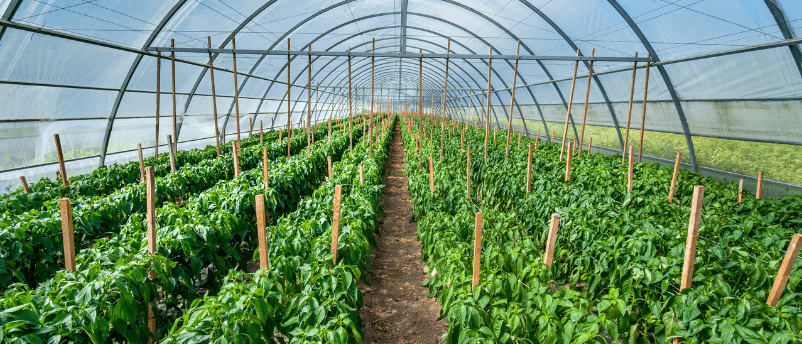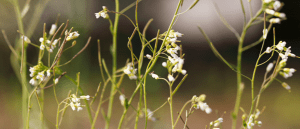
BioTechniques News
Aisha Al-Janabi

Researchers from Hokkaido University (Sapporo, Japan) have developed a UV-to-red wavelength converting film, comprised of a specially designed europium complex and demonstrated its benefits to plant growth.
The visible light from the sun provides the energy for the most essential chemical reaction in the entire natural world: photosynthesis. Sunlight provides energy via photons to kick-start a series of dazzlingly intricate reactions that convert atmospheric carbon dioxide to sugars and, eventually, complex carbohydrates.
Whilst the sun emits light at all wavelengths of the electromagnetic spectrum, plants primarily utilize light at the two ends of the visible spectrum, red (600-700nm) and blue light (295-320nm). Red and blue are readily absorbed by plants, but green light is scarcely used and largely reflected, hence why so much of our world is green. Non-visible wavelengths of light such as infrared (IR) and ultraviolet (UV) are also mostly unutilized in photosynthesis.
However, researchers from Hokkaido University have thought outside the box and asked the question: what if plants could use this light, in particular the high-energy UV light, in photosynthesis? With more wavelengths of light available to the plants, the more nutrients they can produce and, consequently, the more they will grow. This could be readily exploited by foresters and farmers to increase crop yield and promote rapid regrowth of forests.
How can we do this? Plants cannot be reprogrammed into accepting these wavelengths, so for plants to utilize UV light it must be converted to usable wavelengths. The interdisciplinary team has developed a technology that can do just that: a wavelength-converting material (WCM), which absorbs UV light and emits red light. It does this by incorporating an unusual element: europium, a lanthanide.
 How to print functioning plant cells
How to print functioning plant cells
Researchers successfully bioprinted viable plant cells using a 3D printer, creating a reproducible way to study cell-to-cell communications in three dimensions.
Lanthanides comprise the first row of the f-block of the periodic table. Sitting at the bottom of the periodic table, they are often overlooked and underappreciated. Their chemistry, due to the nature of their valence electrons, is complex and unlike most other elements. However, one property they are known for is their luminescence.
Electrons can absorb photons of specific wavelengths, when this occurs, the electron enters an excited state. Upon relaxation, the electrons release this gained energy as another photon of a different wavelength. This quantum phenomenon is the essence of any fluorescent or phosphorescent material.
In the specially designed complex with stabilizing and photosensitizing ligands, europium can absorb UV light and emit red light whilst not blocking any visible light useful to plants for photosynthesis. Moreover, this compound can be made into a transparent thin-film coating that can be applied to glass or plastic sheets.
Next, the team sought to demonstrate the effects of growing plants under the WCM. Two trials were set up, one with Swiss chard and the other with Japanese larch trees to monitor the effect of the increased red light from the WCM. In summer, the difference was insignificant; however, in winter, the Swiss chard grown in the WCM-coated polytunnel for 2 months, exhibited 1.2-times greater heights and a 1.4-fold increase in biomass, when compared to a control group.
In the tree experiment, the Japanese larch seedlings also saw a benefit from the WCM with a similar increase in biomass, compared to a control group. Interestingly the increase in growth attributed to the WCM allowed the seedlings to reach the standard size for forestry planting after only 1 year. Typically, Japanese larch seedlings require up to 2 years to reach this size.
The authors are confident that not only can this improve the rate of reforestation and the cost-efficiency of tree planting, but it could also contribute to sustainable development goals by alleviating food security issues. Lead author Sunao Shoji was confident about the future prospects of the study. “By rationally designing the light-emitting ion, we can freely control the color of emitted light to be other colors like green or yellow, so we expect to be able to create wavelength-converting films that are optimized for different plant types. This opens a large avenue of future development for next generation agriculture and forestry engineering.”
The post Red light farms? Europium-based UV-to-red light-converting films aid plant growth appeared first on BioTechniques.
Full BioTechniques Article here
Powered by WPeMatico
